Why a 90s cult classic still appeals

When Donna Tartt was writing her debut novel, The Secret History – an endeavour that took her eight years – she wasn’t convinced there would be much of an audience for it. Here was a book both inspired by and about a love of Greek mythology, a melancholic tale of a group of classics students at an elite New England university who share a terrible secret, told in Dickensian detail. “I just thought I was writing an old-fashioned, very bizarre book that was to no one’s taste except my own. I was writing it for myself and my friends,” Tartt said in an interview in 2018.
More like this:
– The weirdest ‘children’s books’ ever
– The best books of the year
– A Soviet novel ‘too dangerous to read’
She needn’t have worried. On its publication, in September 1992, The Secret History became an immediate critical and commercial success, one of those rare novels that makes as much of a splash in literary circles as it does on the bestseller lists. And its success wasn’t fleeting. It became the kind of book people read dozens of times and excitedly press into the hands of others. Since its publication, it has sold more than 2.3 million print copies in English alone and been published in 40 languages. Thirty years on, it’s still in the cultural conversation, attracting a whole new generation of fans through TikTok. Donna Tartt has since published two more books – including 2014’s Pulitzer Prize-winning The Goldfinch – but it’s her debut that has made the biggest impression.
Part thriller, part coming-of-age campus novel and part Greek tragedy, The Secret History begins with one of literature’s most memorable first lines; “The snow in the mountains was melting and Bunny had been dead for several weeks before we came to understand the gravity of our situation”. From the book’s chilling prologue, we know straight away that the narrator Richard Papen and his friends have committed a terrible crime. The reader is already in on a secret – the novel is then a story of two parts; what led up to the death of a classmate, and what happens in the aftermath. On its release, The New York Times said: “Imagine the plot of Dostoyevsky’s Crime and Punishment crossed with the story of Euripides’ Bacchae set against the backdrop of Bret Easton Ellis’s Rules of Attraction and told in the elegant, ruminative voice of Evelyn Waugh’s Brideshead Revisited.”
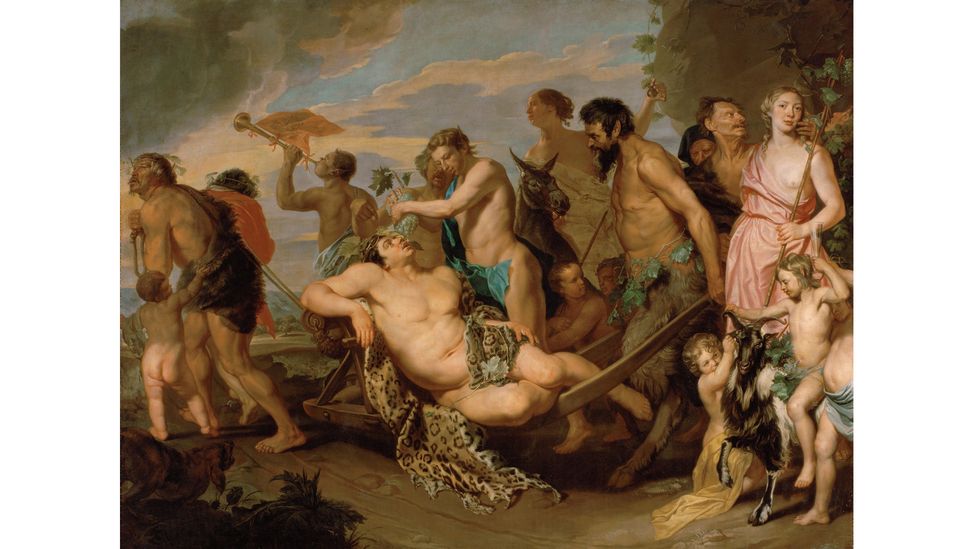
The Secret History draws on the 5th-Century Greek tragedy, The Bacchae, by Euripides (Credit: Getty Images)
Author Laurie Petrou has read The Secret History “dozens” of times. “I’ve had so many copies of that book that I’ve dropped in the bathtub, given away to people or that have just fallen into disrepair,” she tells BBC Culture. She first read the novel in school when a friend lent it to her. “I related to it in a way that I didn’t really relate to any of the books that I was being told to read in school. Near the start, where Richard is talking about the monotony of adolescence, I remember that hitting such a chord with me. But really, it was the writing. It was just so beautiful and so poignant. The unease, the coldness through it; it was the book that really made me a reader and a writer.”
Campus life
The Secret History fits into a long tradition of novels set on university campuses – including Petrou’s latest, Stargazer, about two friends at a remote Canadian university in the 90s, which she admits is inspired by her love of The Secret History. “There’s the obvious parallel, that it’s set on a small campus and about intimate friendship, but also the general chilliness, a cruelty that you can’t quite put your finger on, that makes you uneasy.”
The enclosed campus world, with its own rules and hierarchies, coupled with characters coming together from different backgrounds and hoping to reinvent themselves, lends itself to compelling stories. “It’s young people out on their own in adulthood for the very first time,” says Petrou.”It’s people let loose and behaving badly. It’s intelligentsia, it’s snobbery, it’s privilege, all of these things that are a breeding ground for incredible fiction.”
In The Secret History, Richard Papen lands at Hampden almost by accident – finding a brochure for the college in his coat pocket and applying on a whim after a fight with his parents. Fleeing California for New England is a way to escape his family and the boredom of home – but when he arrives at Hampden a whole new world opens up to him. After initially being refused enrolment to the school’s ancient Greek class, where students are handpicked by charismatic professor Julian Morrow, Richard is eventually allowed into the exclusive club, joining fraternal twins Charles and Camilla Macaulay, Francis Abernathy, Henry Winter, and Edmund “Bunny” Corcoran. Richard’s lower-middle-class background makes him something of an interloper in this wealthy clique – but, of course, everyone loves an outsider in fiction.
Like her characters, Tartt was a classics student, and her classical references add a whole extra layer to The Secret History. “The knowledge and love of classics on the part of the author very definitely comes across throughout The Secret History,” says Owen Hodkinson, associate professor of Greek and Roman Cultures at Leeds University. “Someone could have written something like this plot-wise with classics-based characters, and it would have been fine, but it’s clear from a classicist’s perspective that she’s not just read the Euripides’ Bacchae as a casual reader but studied it and appreciated some scholarship on it.”
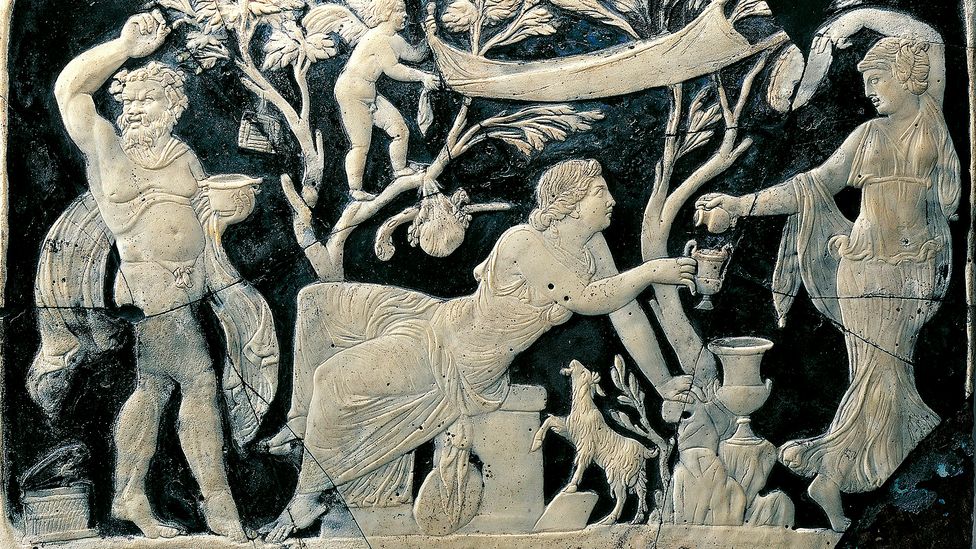
In The Bacchae, hedonistic rites are introduced to Thebes by the god Dionysus (Credit: Getty Images)
The “violence and savagery” of Euripides’ play is referenced early on in the book, as Julian Morrow discusses Dionysian rituals with the class, impressing on them that “beauty is terror”. The students later enact their own version of a bacchanal in the woods – a night of extreme revelry, intoxication and, ultimately, murder.
While Bacchae is Tartt’s most obvious reference, there are many other, complex ones throughout the book, says Hodkinson, mostly imperceptible to anyone not well-versed in classics. “Ironically, it’s creating an inner and outer circle within its readership, like the inner and outer circles among the classics students and the non-classics students in the novel,” he says. “Some readers are going to be able to appreciate so much more of the allusions and the layers to it, and be aware that they’re in that privileged position; but that’s also an uncomfortable position to be in, as it makes that reader more like Henry and some of the other inner clique of classicist.”
The in crowd
Being part of a gifted clique is something Tartt herself was familiar with. She started writing The Secret History while studying at Bennington College, an elite liberal arts university in Vermont. Tartt’s Class of 86 also included Jonathan Lethem, and Bret Easton Ellis – to whom Tartt dedicated The Secret History. Ellis published his first novel, Less Than Zero, while still a student at Bennington and drew heavily from his experiences there for his second, The Rules of Attraction (which references “that weird Classics group… probably roaming the countryside sacrificing farmers and performing pagan rituals”). Like her protagonist, Tartt – originally from Mississippi – was somewhat of an outsider among Bennington’s trust fund kids but, like Richard, she quickly assimilated.
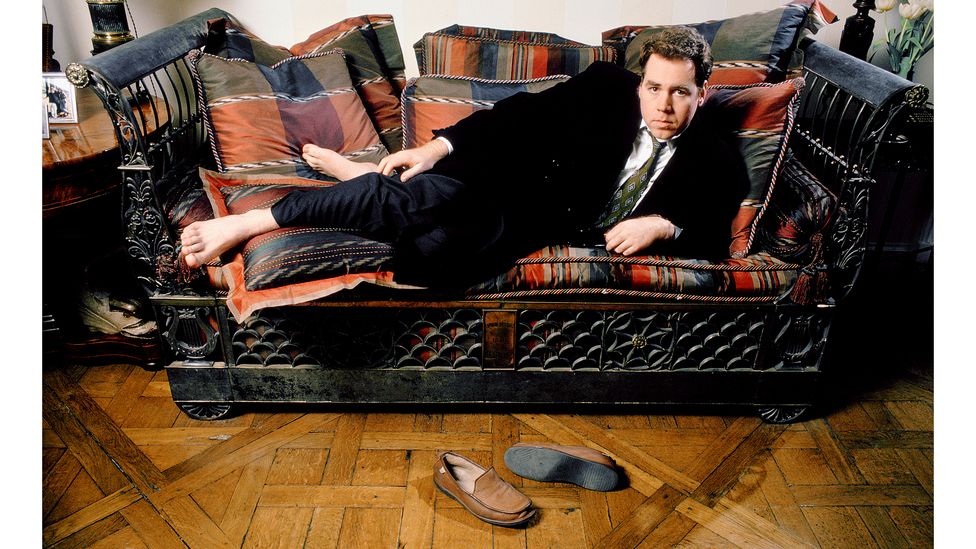
Bret Easton Ellis published his first novel at the age of 21; his third, American Psycho, came out six years later (Credit: Getty Images)
In 2019, journalist Lili Anolik wrote an oral history about the three future literary stars’ time at Bennington in the 1980s for Esquire – and later developed the idea further into a gossipy 14-part podcast, Once Upon A Time… At Bennington College. She first read and fell in love with The Secret History as a teenager. “It was the first book I stayed up all night to finish,” she tells BBC Culture. “All kinds of choices were made on the basis of it. I suffered through four years of Latin in emulation of Richard Papen. I remember wanting very badly to have his experience. I don’t mean I wanted to collectively murder one of my close friends. I mean I wanted to go to a college that was old and had ivy-covered buildings and lots of foliage and an illustrious tradition.”
Anolik firmly believes there would be no The Secret History without Bennington College, such was its influence on Tartt – who herself said it was where she was happiest. In the book, Richard Papen says: “I suppose there is a certain, crucial interval in everyone’s life where character is fixed forever; for me, it was that first fall term I spent at Hampden” – a line taken almost verbatim from Donna Tartt’s own 1986 Bennington commencement address.
In her deep dive into 1980s Bennington, Anolik uncovers delicious details such as Donna Tartt holding martini hours in her dorm room and Ellis arriving on campus with a suitcase full of Class A drugs. She also explores the origins of Tartt’s novel – identifying those who might have inspired the characters. This includes former classmate Matt Jacobsen, who didn’t much like Donna (he described her to Anolik as “the Yoko Ono of the Greek class”) – and who believes he was the inspiration for Bunny, the character killed by his classmates. The revelations led the LA Review of Books to question whether The Secret History is, in fact, “an incredibly elaborate and sophisticated burn book”.
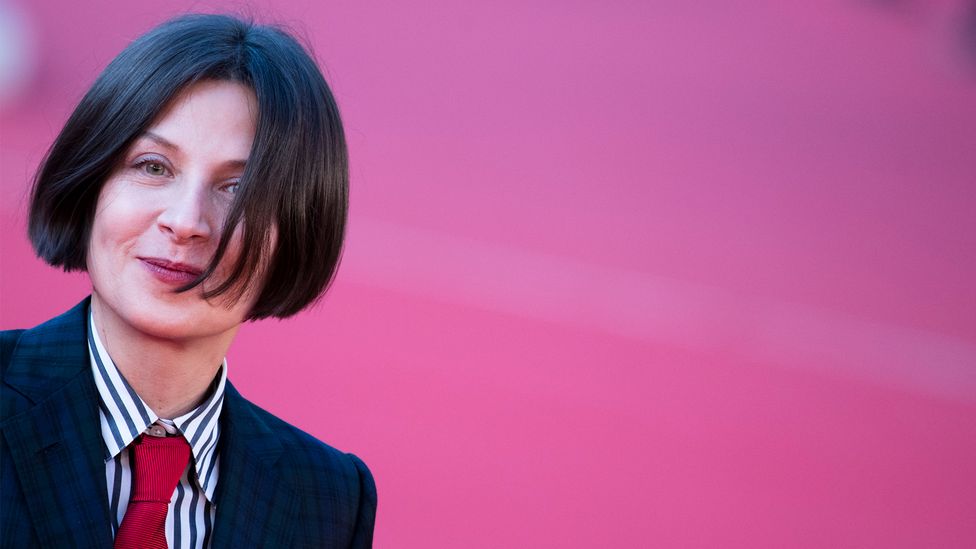
Tartt has also said that ‘Books are other lives. They enable us to be other people’ (Credit: Getty Images)
Tartt herself has always brushed off claims that the book is based in any way on her life. “Only in a very mild and minor way. It’s really a fantasia about university,” she told one interviewer (She has admitted she took inspiration from the unsolved disappearance of a Bennington student in the 1940s).
Last year, when The New Yorker published a profile about Bennington classics professor Claude Fredericks, citing him as the inspiration for The Secret History’s Julian Morrow, Tartt responded to the magazine’s fact-checking enquiries with a statement defending her “kind and generous” former teacher and expressing her frustration at journalists making comparisons. “To me, this confusion is both tragic and unfair to the memory of Claude.”
When Anolik’s podcast aired, Tartt’s lawyers issued a letter to the producers, warning them not to use any “false, misleading or otherwise inaccurate statement” about Tartt. Unlike Bret Easton Ellis and Jonathan Lethem, Tartt declined to contribute to either Anolik’s oral history or the podcast.
“Donna is clearly a private person and seems to have serious misgivings about fame. Yet she’s supremely good at being famous,” says Anolik. “The Secret History was not her only literary creation during her Bennington years. There was also her literary self-creation – that is, her persona – which is just as theatrical, just as deliberate, just as ingenious as her fiction.” Part of this was her appearance – the neat black bob, the tailored suits, the ties and cravats – that came to be her signature look and which Anolik suspects was, like her work, influenced by Brideshead Revisited. “She seems to have very consciously designed herself to look like a Waugh character. She’s a female Sebastian Flyte.”
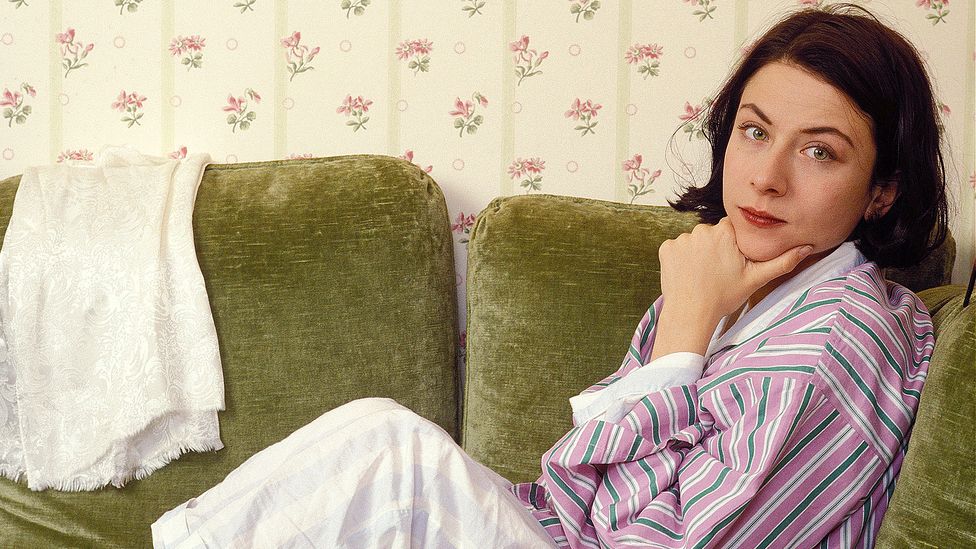
In a 2013 interview, Tartt quoted Ralph Waldo Emerson on ‘the great freedom of American life as the freedom… to shut the door, to close the curtains’ (Credit: Getty Images)
Bret Easton Ellis – an early reader of Tartt’s manuscript for The Secret History – introduced his friend to his literary agent, who secured a $450,000 advance for the book. On its publication in 1992 the reviews were overwhelmingly positive (Time magazine called it “viscerally compelling”, Newsday labelled it “a thinking person’s thriller” ) – though not entirely, with The Independent saying “style is confused with substance time and again”. Still, the hype machine was already in full swing – with Tartt landing an eight-page profile in Vanity Fair and accompanying photoshoot alongside her pug, Pongo. Speaking to the New York Times at the time, her publisher Sonny Mehta said: “We didn’t know what she looked like when we bought the book, but it certainly hasn’t hurt.”
That Vanity Fair profile introduced her with the line: “Donna Tartt, who is going to be very famous very soon…” – but from the start, Tartt preferred to keep an air of mystery, brushing off questions about her personal life. The scant details that emerged were quickly mythologised: Her answer phone message was TS Eliot reading The Waste Land; she bought her clothes in Gap Kids; she could drink Bret Easton Ellis under the table.
Throughout her career, interviews have been rare – usually only to promote a new book, of which there have been just two more in the subsequent 30 years, The Little Friend in 2002 and 2014’s The Goldfinch. The mystery has only added to her legend. “The Secret History is enduring because The Secret History is so good,” says Anolik. “But it certainly doesn’t hurt that Donna has brilliant instincts about cult obsession and understands how to manage an enigmatic reputation.”
Still, the idea of her as a total recluse is overstated. In an interview with Italian publication Rivista last year, she talked openly about her love of fashion, her favourite contemporary music (Lana Del Rey) and her writing routine (“three hours in the morning”) – and hinted that a new book might be on the way. She also declared, to no one’s surprise, that she’s never used social media.
Viral prose
It’s ironic then, that social media is the reason The Secret History is riding a whole new wave of popularity, thanks to “Dark Academia” , a subculture on TikTok and Instagram that romanticises learning and celebrates an aesthetic that is “traditional academic with a gothic edge.” The book is seen as Dark Academia’s essential text, and videos with the hashtag #thesecrethistory have more than 150 million views on TikTok – featuring everything from young people cosplaying the book’s characters to fans reciting favourite passages or showing off their annotated copies. “It has been a joy to see a new generation discover Donna Tartt’s masterpiece,” says Isabel Wall, editorial director of Tartt’s UK publisher, Viking – which is publishing a special clothbound edition of the book to mark the 30th anniversary.
To Petrou, it makes total sense that the book continues to connect with young readers – even if the world depicted in it feels more distant than ever from today’s digital age. “It’s youth, right,” says Petrou. “Those same things that struck a chord for me as a young person, strike a chord for young people over and over again.” Anolik agrees that the book is timeless. “I think young people are natural snobs. And The Secret History is the great young-snob American novel, as Brideshead Revisited is the great young-snob English novel.”
Thirty years and millions of readers later, discovering The Secret History still somehow feels like joining an exclusive club. “To experience that book for the first time is see someone at the best in their craft,” says Petrou. “I envy those that haven’t read it yet.”
Love books? Join BBC Culture Book Club on Facebook, a community for literature fanatics all over the world.
If you would like to comment on this story or anything else you have seen on BBC Culture, head over to our Facebook page or message us on Twitter.
And if you liked this story, sign up for the weekly bbc.com features newsletter, called The Essential List. A handpicked selection of stories from BBC Future, Culture, Worklife and Travel, delivered to your inbox every Friday.








